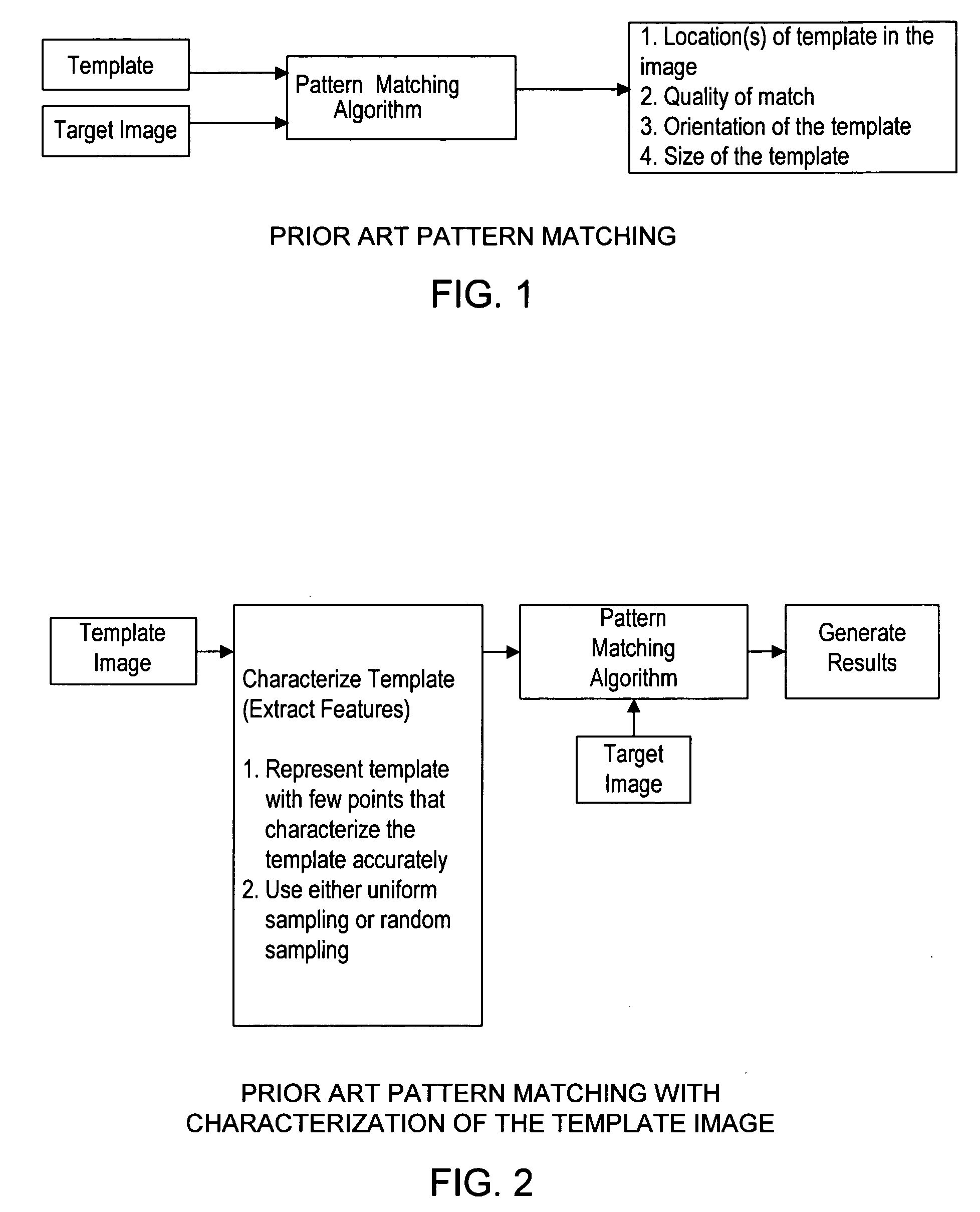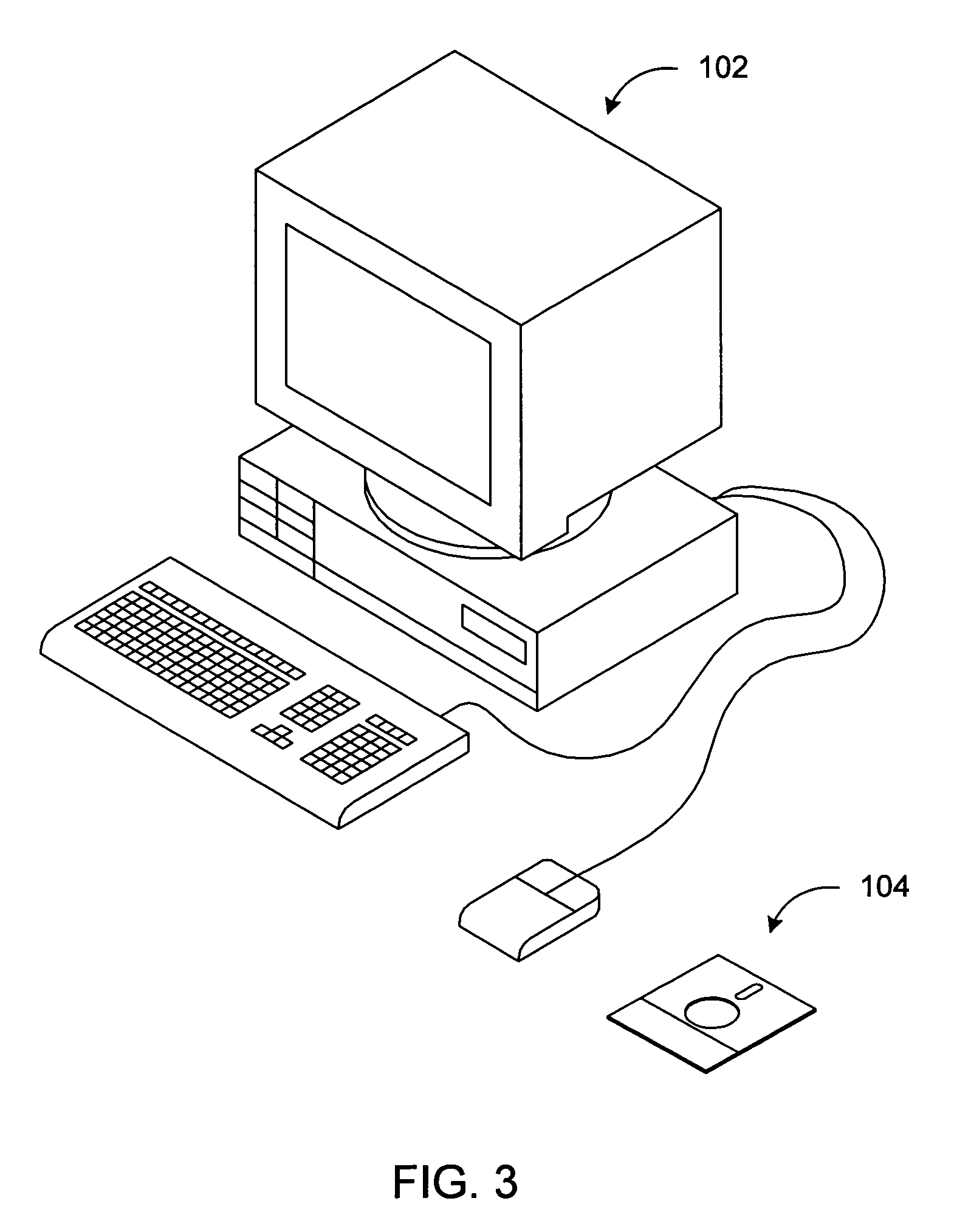[0034]The Low Discrepancy sequence may be designed to produce sample points which maximize the distance between sample points. Also, the Low Discrepancy sequence sampling may result in fewer points and / or a better characterization of the template image pattern information than a random sequence sampling or a uniform sampling. Examples of the Low Discrepancy sequence include Halton, Sobol, Faure, and Niederreiter sequences. The sampling or characterizations of the template image pattern and color information are preferably performed off-line prior to receipt of a target image. Thus, the analyses of the template image are preferably not constrained by real time requirements. After the candidate color match regions have been determined, pattern information of a region proximal to or surrounding each color match region may be compared to the pattern information of the template image, using the sample points determined in the pattern characterization method.
[0035]In another embodiment, the pattern characterization may involve sampling the template image, wherein the template image comprises a first plurality of pixels, and wherein the sampling produces a second lesser number of sample pixels. This sampling may use any of various sampling techniques, including a Low Discrepancy sequence as described above. A local stability analysis is then performed around at least a subset of the sample pixels to determine a lesser third number of sample pixels which have a desired degree of stability. The local stability analysis operates to ensure stability of each of the subset of sample pixels to spatial perturbations around the sample pixel. For each pixel, the local stability analysis preferably comprises finding a neighborhood around the sample pixel where the value, e.g., the grayscale value, of the sample pixel correlates highly with the template image pixel values in the neighborhood. The local stability analysis is preferably performed for all of the sample pixels. The third plurality of sample pixels may then be used in the pattern matching.
[0036]In one embodiment, the local stability analysis determines a plurality of sets of sample pixels with differing stability neighborhood sizes, and the pattern matching performed for each region surrounding a candidate color match region comprises performing a plurality of iterations of pattern matching using different sets of sample pixels. The iterations are preferably performed in a coarse to fine manner, e.g., using sets of sample pixels with successively smaller stability neighborhood sizes. This plurality of iterations of pattern matching may also use different step sizes for each of the different sets of sample pixels, wherein the step size preferably corresponds with the stability neighborhood size. Thus the plurality of iterations of pattern matching in the coarse to fine manner preferably uses sets of sample pixels with successively smaller stability neighborhood sizes and / or successively smaller step sizes. For example, a first iteration of pattern matching may determine one or more candidate pattern match regions in the region which possibly match the pattern information of the template image, and one or more second iterations of pattern matching may then be performed at the determined one or more candidate pattern match regions in the region, and so on.
[0037]The techniques described herein may also be used to perform pattern matching to locate one or more instances of a rotated or scaled color template image in a color target image. The pattern characterization of the template image may comprise first sampling the template image along one or more rotationally invariant paths, preferably circular perimeters, to produce one or more sets of sample pixels. The pattern matching performed may then use a cyclic correlation between each of the one or more sets of sample pixels and the target image to determine zero or more regions of the template image in each region surrounding a color match candidate region. This pattern matching detects rotated versions of the template image in the target image.
[0038]In one embodiment, a local stability analysis around at least a subset of the sample pixels may be performed. The pattern matching may then use one or more sets of sample pixels along one or more circular perimeters based on the local stability analysis. The local stability analysis preferably determines a plurality of sets of sample pixels with differing stability neighborhood sizes. In this case, the pattern matching comprises performing a plurality of iterations of pattern matching using different sets of sample pixels, preferably in a coarse to fine manner, e.g., using sets of sample pixels from circular paths with successively smaller stability neighborhood sizes. The pattern matching may also use different step sizes for each of the different sets of sample pixels. As discussed above, a first iteration of pattern matching within each region may determine one or more candidate pattern match locations and corresponding rotation values in the target image, and one or more second iterations of pattern matching may be performed at the determined one or more candidate pattern match locations in the region using the respective rotation values, and so on. A final pattern matching may utilize substantially all of the template image pixels at the respective candidate locations and using the determined rotation values.
 Login to View More
Login to View More  Login to View More
Login to View More 


